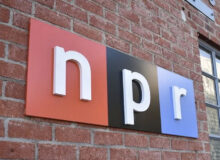In my earlier Saints mock drafts at this site, I predicted the Saints would trade down in the first round, and in doing so they would eventually draft UCLA inside linebacker Erick Kendricks with their new first pick, at spot 22 in the opening round. At first I did so because my reading of GM Mickey Loomis’ intentions combined with my expectations for who would be available at their original spot 13 made me think that would indeed be what Loomis would do. In other words, it really was a prediction, not a wish list. But as the days have gone by, the move started making so much sense to me that it now has become so much what I want to see, rather than necessarily what I expect to see, that I have lost predictive objectivity. I’m not sure if I’m still reading actual tea leaves or if I’m just reading my own wishes into the tea leaves.
So let me explain now not what I think will happen, but why I originally thought it would happen, and why my scenario would be a good one for the Saints.
First, I do think Loomis has tendencies — one of which is the demonstrated ability, over time, to learn from past mistakes. Not immediately, mind you, but if he makes the same sort of mistake several times, he does change course.
One of his repeated mistakes has been to “trade up” in drafts, giving up extra choices or players in order to be able to draft sooner and snatch a particular player he really wants. This is often a mistake (in my book) because it puts too many eggs in one basket. A misguided analysis of the desired player’s strengths can produce a busted pick. So too can an injury to the player even if he otherwise would have been a good choice. Usually, therefore, I’d rather wait a little and keep more choices than trade up and take the risk.
As a matter of fact, the Saints’ experience with trading up has been more bad than good, as is shown by a list compiled by the Canal Street Chronicles. In the Sean Payton era, the Saints have traded up for Antonia Pittman, Sedrick Ellis, DeMario Pressley, Adrian Arrington, Thomas Morstead, Al Woods, Matt Tennant, Mark Ingram, John Jenkins, and Brandin Cooks. Of those, only Morstead has been a total success. Pittman, Pressley, Arrington, Woods and Tennant were almost complete busts. Ellis was serviceable for a while, but certainly not worth the seventh pick in the draft. (Yes, we ended up getting Carl Nicks for the “move-down” slot way down in the 5th round, but that was lucky.) Cooks looks quite good, but not better than some other receivers chosen shortly after him. Ingram is a very good back — but again, he quite arguably hasn’t been worth the price we paid to move up. And the jury is definitely still out on Jenkins, who so far seems like Ellis, just serviceable but no star.
On the other hand, the three times the Saints traded down rather than up, it worked out pretty well. When the smoke cleared from those trades, we had secured the services of Roman Harper, Jeff Faine, Jahri Evans, Hollis Thomas, Usama Young, and David Jones. In short, three big winners for at least a short well, a decent center in Faine, a decent special-teams player in Young, and only one bust, Jones.
On top of that, there is quite an argument to be made now that the “trade value” chart long in use has the effect of over-valuing early picks — meaning that those who trade up have usually given up too much in overall value, while those who traded down got the better deals. (See Evan Woodberry’s article on this yesterday at the Times-Picayune, which supports my own, prior, back-of-the-envelope assessment about this.)
In short, the best thing to do is usually to stand pat and see if a player you covet remains available at your ordinary spot in the draft. If so, nab him. If not, trade down to get an extra pick or player. But, except in rare circumstances, don’t trade up.
In this case, I expect all of the really top Saints draft targets to be gone by choice 13. Of the players whose skill sets are worth a 13th-spot selection, I think only Randy Gregory will be available. I think the Saints will, and should, avoid picking him. It’s not just that his “character” is in question because of his positive marijuana tests and other indices, but so, indisputably, is his judgment. Anybody who would smoke dope when he knows the NFL Combine does drug tests has proved he lacks reasonable self-control and discipline, and he’s too risky a choice.
But he’s such a good player that other teams, such as Pittsburgh, will probably be willing to take the risk. Hence my prediction that the Saints will trade down, to get nearly a king’s ransom in return for giving the Steelers (or somebody else) the chance to draft Gregory.
The question then becomes, why would I choose inside linebacker Erick Kendricks at spot 22?
Because Loomis would (and should) rather grab somebody with the highest “floor” instead of using a first-round choice on somebody with a super-high “ceiling” but a lower floor. In other words, he would gladly take a player who seems almost certain to turn out very well in the NFL, without much chance of being any worse than very good, even if the player seems less able to be a future Hall of Famer. But he doesn’t want to reach for a guy with freakish enough athletic skills to immediately suggest HoF potential, if that guy also has weaknesses of skills or attitudes that could lead him instead to perform significantly worse than hoped.
Kendricks is one of the players in the draft with the highest floor. There’s almost no way, barring injury, that he will be anything worse than a solid pro player for six, seven, or eight years. And he might be a heck of a lot better than solid.
Kendricks plays with hustle and heart. He’s very fast for an inside linebacker. He has a nose for the ball, and great game instincts. He has a great football pedigree (his dad played for UCLA and his brother starts right now for the Eagles), so he has role models for what athletic professionalism means. (This is another big trend for Loomis: He likes players with NFL pedigrees, e.g. Mark Ingram, Nick Toon, Mike Golic Jr., Luke McCown, Kenny Stills, Cameron Jordan.) Kendricks can be an every-down player, because he drops back in pass coverage just as well as he plays against the run. In fact, this fits a huge need for the Saints: Their linebackers right now are at best fair-to-middling in pass coverage; Kendricks is probably the best coverage LB in the whole draft. I watched a fair amount of highlight video of him, and he never gives up on a play against run or pass, takes great angles, and really knows how to blanket tight ends and running backs in coverage.
I’ve seen mock drafts with Kendricks going as high as the 16th selection, but with most having him go between 25 and 35. He should be available at the 22nd spot, and he’s a “can’t miss” solid starter, almost from day one, with the potential to be a Pro Bowler. And long-term, the Saints desperately need a really, really good inside linebacker, because even if David Hawthorne performs well this year, he has some miles on him and doesn’t have many years left.
At spot 31, I have the Saints taking offensive lineman Luke Fisher. Same explanation: Excellent ceiling, yes, but more importantly a very high floor. Low-risk, high reward, even if not a ton of flash.
The rest of the draft sort of speaks for itself. I think Utah’s edge rusher Nate Orchard has a chance to be another Dwight Freeney as a sack specialist, and the reports on his character and maturity are superb. Then, by trading down, going by the existing “draft value chart,” the Saints in my scenario get another choice toward the end of the second round. If the Saints take offensive lineman Ali Marpet there, they will have laid the groundwork for a solid offensive line for years to come.
Four virtually “can’t miss” picks in the first two rounds: That’s the recipe for perennial competitiveness. The rest — and I think my suggested “rest” is pretty darn good — is rather tasty gravy.
Who Dat say dey gonna out-draft the Saints? Who Dat? Who Dat?







